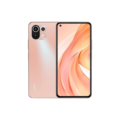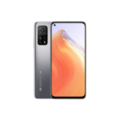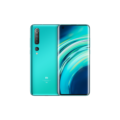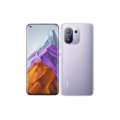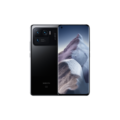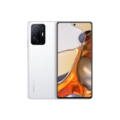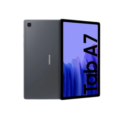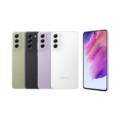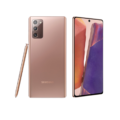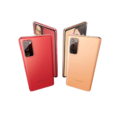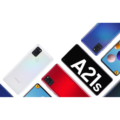Xiaomi Pad 5 Harga Malaysia
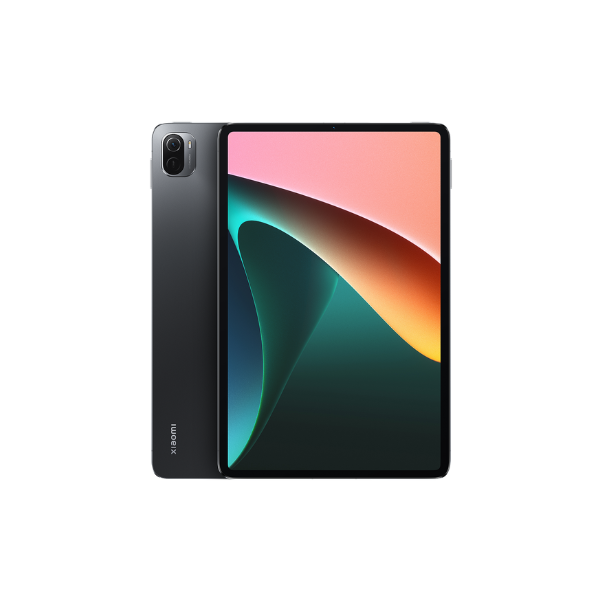

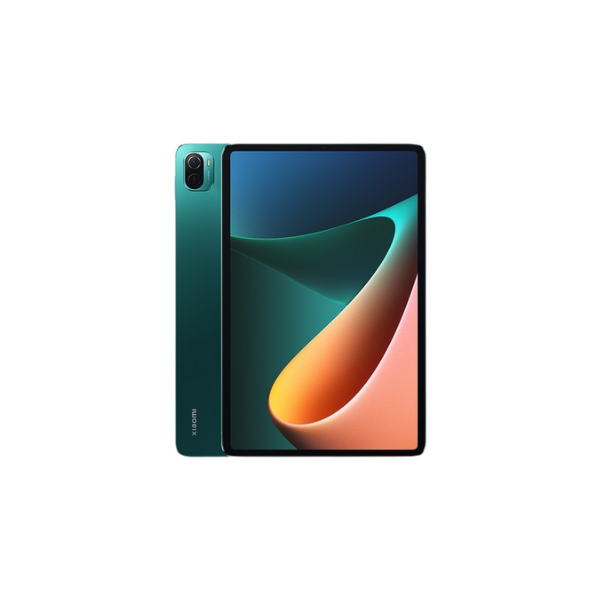
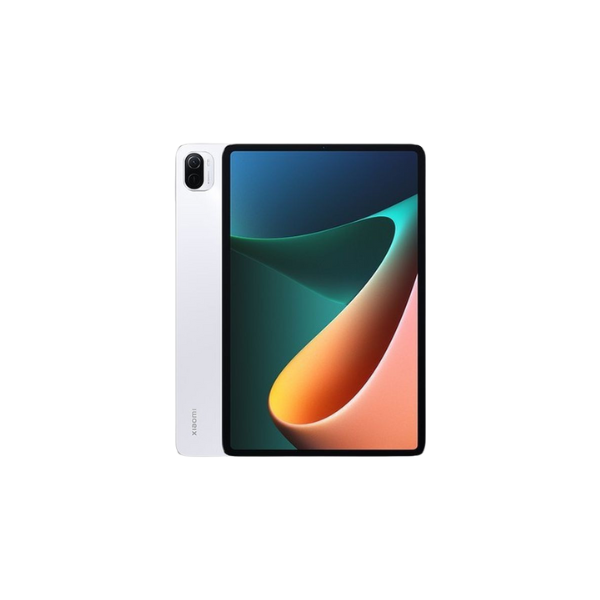
- CPU: Qualcomm Snapdragon 860 (7 nm)
- RAM: 6 GB
- Storage: 128 GB, 256 GB
- Display: IPS LCD
- Camera: 13 MP Single Camera
- OS: Android 11, MIUI 13
- AnTuTu Total Score: 575.266 (v9)
Xiaomi Pad 5 Harga Malaysia Spesifikasi Malaysia
General
| Device Type | Tablet |
| Model | 21051182G, 21051182C |
| Announced | 10 August, 2021 |
| Released | 10 August, 2021 |
| Status | Available |
| Price | RM799 |
Design
| Type <strong>Design Type</strong> called form factor refers to a mobile phone's size, shape, and style as well as the layout and position of major components of phone. There are three major form factors seen in mobile phones => bar phones, folding phones and sliding phones. | Bar |
| Dimensions | 254.7 x 166.3 x 6.9 mm (10.03 x 6.55 x 0.27 in) |
| Weight | 511 g (1.13 lb) |
| Body Type | Glass front, aluminum frame, plastic back |
| Colors | Cosmic Gray, Pearl White, Green |
Network
| 4G Network | No |
| 5G Network | No |
| SIM <strong>SIM</strong> (Subscriber Identity Module) is a small card that contains mobile network subscriber's account information. This allows the phone using the card to attach to a mobile network. The SIM card is most commonly associated with GSM and UMTS mobile networks. Moving a SIM card from one phone to another allows a subscriber to switch mobile phones without having to contact their mobile network carrier. SIM cards can also be used by a phone to store limited amounts of data, such as phone numbers and text messages. | Standard SIM |
| Dual SIM | No |
Display
| Display Type <strong>Display Technology => </strong> A number of display technologies and types used in mobile phones => TFT (Thin Film Transistor), IPS (In-Place Switching), OLED (Organic Light Emitting Diode), AMOLED (Active-Matrix Organic Light-Emitting Diode), Super AMOLED (an even advanced version of AMOLED), Resistive Touchscreen (Resistive touchscreens contain two layer of conductive material with a very small gap between them which acts as a resistance), Capacitive Touchsceen (Capacitive touchscreen technology consists of a layer of glass coated with a transparent conductor) | IPS LCD |
| Size | 11.0 inches, 350.9 cm2 (~82.8% screen-to-body ratio) |
| Resolution | 1600 x 2560 pixels, 16:10 ratio |
| Display Colors <strong>Display Colors</strong> is refers to the number of different shades of colors that the screen is capable of displaying => 64K colors, 256K colors and 16 million colors, Obviously 16M is highest available range of colors and better than others. | 1B colors |
| Pixel Density <strong>Pixel Density (PPI)</strong> is refers to the concentration of pixels on a particular display, measured in pixels per inch (ppi). Pixel density is calculated by dividing the diagonal pixel resolution of a display by its diagonal size, higher pixel density better display quality. | (~274 ppi density) |
| Touch Screen | Yes, Multitouch |
| Features |
120Hz refresh rate Dolby Vision HDR10 |
Camera
| Rear Camera <strong>Camera</strong> is able to capture photographs and usually videos, The most important characteristics of a camera are the resolution (measured in megapixels), lens focus type (fixed or automatic), higher megapixel cameras are known to capture higher quality photos, but not always a good measurement of the photos quality. | Single Camera 13 MP, f/2.0 |
| Front Camera | 8 MP, f/2.0, 1080p@30fps |
| Image | 2160p |
| Video | 4K@30fps, 1080p@30fps |
| Camera Features | Dual-LED flash, HDR, panorama |
Software
| Operating System <strong>OS => </strong> Every computer system run on a base software called Operating System (OS). Operating System controls all basic operations of the computer (such as smartphone, PDAs, tablet computers and other handheld devices). The Operating System allows the user to install and run third party applications (apps), apps are used to add new functionality to the device. | Android 11, upgradable to Android 12 |
| User Interface <strong>UI</strong> or user interface of a device is the look and feel of the on-screen menu system. How it works, its color scheme, how it responds to button presses, all of these things are part of the user interface. | MIUI 13 |
Hardware
| Chipset <strong>Chipset</strong> is a group of integrated circuits designed to perform one or a more dedicated functions, often with real time computing constraints, Popular smartphones are equipped with more advanced embedded chipsets that can do many different tasks depending on their programming. | Qualcomm Snapdragon 860 (7 nm) |
| CPU <strong>CPU</strong> (Central Processing Unit) mostly known as processors, CPU processes instructions in order to carry out certain functions that make your device operate properly. Processors are often described as the brain of computers, smartphones and tablets, Smartphones and tablets rely on processors to carry out their every task, Processors are an incredibly important factor in selecting any type of computing device, including your smartphone. | Octa-core (1x2.96 GHz Kryo 485 Gold & 3x2.42 GHz Kryo 485 Gold & 4x1.78 GHz Kryo 485 Silver) |
| GPU <strong>GPU</strong> (Graphics Processing Unit) is a single-chip processor designed to rapidly manipulate and alter memory to accelerate the creation of images in a frame buffer intended for output to a display, This includes things such as lighting effects, object transformations, and 3D motion. | Adreno 640 |
| RAM (Memory) <strong>RAM</strong> (Random Access Memory) is a type of computer memory that can be accessed randomly, any byte of memory can be accessed without touching the preceding bytes that allows information to be stored and accessed quickly from random locations. RAM is the most common type of memory found in computer systems, smartphones, tablets and other electronic devices. | 6 GB |
| Internal Storage <strong>Internal Storage</strong> is a data storage space (flash memory) mostly used in smartphones, tablets and other electronic devices where operating system, apps, music, photos, videos, files and other user data Is stored. | 128 GB, 256 GB |
| Card Slot <strong>Memory Card Slot</strong> is a special slot for inserting a memory card. Memory cards allow you to expand the phone's built-in memory, A memory card (sometimes called a flash memory card or a storage card) is a small storage medium used to store data such as text, pictures, audio, and video, for use on small, portable or remote computing devices such as mobile phones, mp3 players, digital cameras. | No |
| Sensors <strong>Sensors</strong> are electronic components that detects and responds to some type of input from the physical environment. The specific input could be light, heat, motion, moisture, pressure and location, The output is generally a signal that is converted to use in computing systems, a location sensor, such as a GPS receiver is able to detect current location of your electronic device. | Accelerometer, gyro, proximity, compass |
Battery
| Battery Type <strong>Battery Type => </strong> Cell phones run on various kinds of batteries depending on the manufacturer, phone size or shape and features. There are basically four types of cell phone batteries => Lithium Polymer, Lithium Ion, Nickel Metal Hydride and Nickel Cadmium. | Li-Poly (Lithium Polymer) |
| Placement | non-removable |
| Capacity <strong>Battery Capacity</strong> is a measure (typically in Amp-hr) of the charge stored by the battery, and is determined by the mass of active material contained in the battery. The battery capacity represents the maximum amount of energy that can be extracted from the battery under certain conditions. | 8720 mAh |
| Charging | 33W wired, PD3.0 |
Connectivity
| Bluetooth <strong>Bluetooth</strong> is a wireless communications technology for exchanging data between mobile phones, headsets, computers and other network devices over short distances without wires, Bluetooth technology was primarily designed to support simple wireless networking of personal consumer devices. | 5.0, A2DP, LE |
| Wi-fi <strong>Wi-Fi</strong> is a popular wireless networking technology using radio waves to provide high-speed network connections that allows devices to communicate without cords or cables, Wi-Fi is increasingly becoming the preferred mode of internet connectivity all over the world. | Wi-Fi 802.11 a/b/g/n/ac, dual-band, Wi-Fi Direct |
| Wi-fi Hotspot | |
| USB | USB Type-C |
| GPS <strong>GPS</strong> The Global Positioning System is a satellite-based radio navigation system, GPS permits users to determine their position, velocity and the time 24 hours a day, in all weather, anywhere in the world, In order to locate your position, your device or GPS receiver must have a clear view of the sky. | No |
| NFC <strong>NFC</strong> (Near field communication) is a set of standards for smartphones and similar devices to establish peer-to-peer radio communications with each other by touching them together or bringing them into proximity, usually no more than a few inches. | |
| Wireless Charging <strong>Wireless Charging</strong> (Inductive Charging) uses an electromagnetic field to transfer energy between two objects. This is usually done with a charging station. Energy is sent through an inductive coupling to an electrical device, which can then use that energy to charge batteries or run the device. | No |
Media
| Loudspeaker | Yes, with stereo speakers |
| Handsfree | No |
Tarikh pelepasan Xiaomi Pad 5 adalah pada 10 Ogos 2024, dan dengan penjelmaan Xiaomi Pad 5 Pro yang dijangka akan dilancarkan pada 24 Disember 2024, kita dapat melihat bahawa Mi Pad 5 baru telah menjadi salah satu pilihan untuk pilihan Pad yang lebih baik dan premium.
Oleh itu, di sini kita akan mengkaji spesifikasi Xiaomi Pad 5, bagaimana prestasinya, dan adakah anda perlu menyimpan wang untuk Pad 5 Pro yang lebih baru.
Pemikiran awal kami mengenai Pad 5 adalah bahawa ia merupakan peranti yang cukup berkuasa, dengan cip Snapdragon 860 dan 6GB RAM.
Peranti ini hadir dengan pad yang berprestasi hebat yang dijangka daripada Xiaomi Pad. Ia juga hadir dengan paparan yang lancar dan mengagumkan, dengan harga premium yang ditawarkan.
Reka Bentuk
Dari segi reka bentuk asalnya, ia mempunyai berat 511 gram untuk Pad, dan dimensi badannya adalah 254x166x6.8 mm.
Ia mempunyai bahagian hadapan kaca yang dilindungi dengan Gorilla Glass, bingkai belakang aluminium, dan sokongan stailus magnet plastik di bahagian belakang. Bagi warna Pad 5, ia menawarkan warna Cosmic Gray dan Pearl White, tetapi ketersediaan warna mungkin berbeza antara rantau.
Bagi Xiaomi Pad 5 Pro yang akan dilancarkan pada Disember nanti, Sejauh ini, tidak banyak perbezaan daripada reka bentuk asalnya.
Paparan
Alasan orang membeli Pad kebanyakannya adalah kerana paparan skrin yang lebar, selesa digunakan untuk kerja, dan kadang-kadang untuk tujuan permainan.
Saiz skrin Xiaomi Pad 5 hadir dengan 11.0 inci, dengan nisbah badan skrin 82.8%. Ia mempunyai resolusi maksimum 1600 x 2560 piksel dengan nisbah aspek maksimum 16:10.
Ia mempunyai paparan skrin IPS LCD, sedikit pelik kerana banyak pad dan telefon telah menyesuaikan dengan skrin AMOLED, tetapi masih berkuasa. Ia menawarkan kadar penyegaran maksimum 120 Hz yang sangat baik, dilengkapi dengan HDR10 dan Dolby Vision.
Kamera
Walaupun Xiaomi Pad 5 adalah pad premium, kameranya sedikit kurang memuaskan, walaupun tidak banyak orang yang membeli pad kerana kamera.
Kamera belakang hanya menawarkan satu kamera utama dengan kamera 13MP, dan kamera hadapan hanya boleh mencapai 8MP. Ia menawarkan pengambilan video 4K hingga 30 fps, dan video 1080P hingga 30 fps.
Perisian
Xiaomi Pad 5 hadir dengan perisian Android 11, dengan penambahan MIUI 12.5. Ini sudah cukup baik untuk memproses perisian dan aplikasi dengan lebih pantas, walaupun apabila Android 12 akan datang, sesetengah orang mungkin berpendapat ia tidak akan mencukupi. Walaupun begitu, untuk pad, Android 11 sudah cukup baik.
Prestasi
Berdasarkan spesifikasi Xiaomi Pad 5, prestasi Xiaomi Pad 5 dijangka daripada Pad premium.
Ia menawarkan pemproses yang pantas dengan Octa-core, pemproses 2.96 GHz, dan dengan cipset Qualcomm Snapdragon 860, salah satu generasi cipset terkini. Ia disokong oleh GPU Adreno 640 dan dilengkapi dengan 6GB RAM serta 128GB ROM.
Bateri
Hayat bateri Xiaomi Pad 5 hadir dengan kapasiti bateri 8720mAh, bateri yang tidak boleh dilepas dan cas pantas 33W. Ia hadir dengan penghantaran kuasa 3.0, sedikit mengecewakan kerana banyak yang menyediakan penghantaran kuasa 4.0.
Harga
Harga bagi Xiaomi Pad 5 biasa datang pada RM799 hingga RM1,649.
Anda boleh semak dan kunjungi di Mi Malaysia
Soalan Lazim
Bagaimanakah paparan Xiaomi Pad 5?
Ia menawarkan paparan skrin lebar yang sangat baik, datang dengan warna yang tajam, dan kadar penyegaran maksimum sangat baik untuk disentuh.
Apakah beberapa ciri utama Xiaomi Pad 5?
Ia mempunyai banyak ciri menakjubkan, seperti paparan resolusi skrin yang luas, pemproses dan cipset yang lebih cepat, hayat bateri yang menakjubkan, dan 234 boleh menjadi peminat.
Bagaimanakah reka bentuk Xiaomi Pad 5?
Reka bentuk bagi Xiaomi Mi Pad 5 agak hebat, walaupun sedikit kurang memuaskan dengan kemunculan Xiaomi Pad 5 Pro yang akan datang pada Disember.
Jadi, pemikiran akhir kami mengenai Xiaomi Pad 5, dengan harga yang ditawarkan, Xiaomi Pad 5 telah memberikan prestasi yang cukup baik. Ia mempunyai pemproses yang sangat pantas, dengan paparan yang lancar dan mengagumkan untuk animasi, dan peralihan aplikasi yang lebih lancar.
Ia menawarkan prestasi yang hebat dalam satu pad dan sesuai untuk pelbagai kegunaan dari permainan hingga kerja. Satu-satunya kelemahan yang ketara adalah kameranya kerana ia bukanlah keistimewaan Mi Pad.

